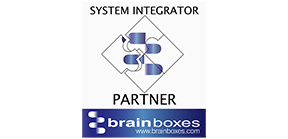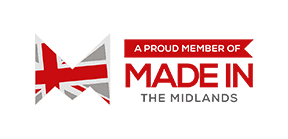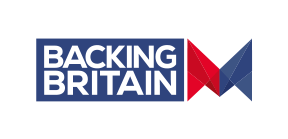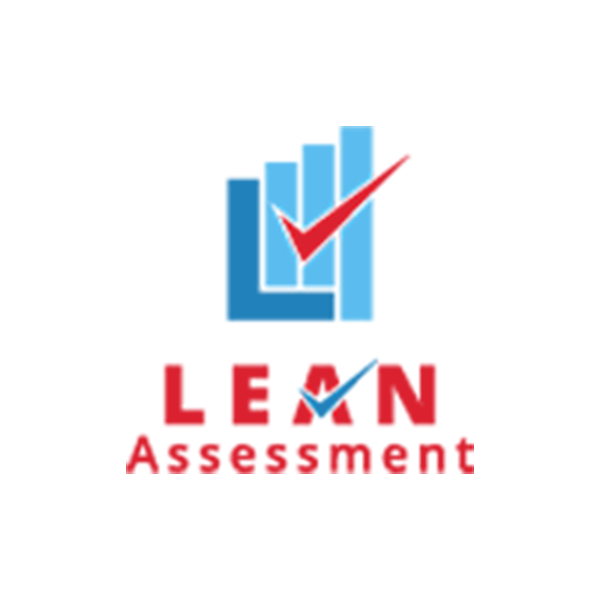Improving Manufacturing Processes with Lean Techniques
- By Brett Griffiths
- Lean Technology
- June 14 , 2023
- Share
.jpg)
In the manufacturing world, where efficiency and productivity rule supreme, the Lean Manufacturing approach has emerged as a game-changer. This revolutionary methodology has transformed business operations- streamlining processes, eliminating waste, and maximising value creation. By combining innovative lean techniques in the continuous improvement journey, lean manufacturing has become the driving force behind the success of numerous industries.
In a nutshell, Lean manufacturing is all about eliminating and decreasing those that do not add value to the final product or service, thereby increasing overall productivity. Lean manufacturing aims to maximise customer value while minimising waste. Thus, businesses achieve an efficient and effective production environment that delivers high-quality products or services with shorter lead times, lower costs, and improved customer satisfaction.
Streamlining manufacturing operations with lean principles has proven to reduce waste and improve efficiency effectively. Organisations can achieve continuous improvement and produce quality products by incorporating lean tools and techniques. Standardising processes and prioritising customer-centricity contribute to lean practices' success. Discovering and utilising crucial Lean tools and techniques can significantly improve manufacturing processes and pave the way for long-term success.
Lean principles play a crucial role in transforming the manufacturing environment with its core concepts which include:
- Value: Identifying what customers consider valuable and aligning the production process to deliver that value.
- Value Stream: Mapping the value stream includes all the steps and processes involved in delivering the product or service, from raw materials to the end customer.
- Flow: Ensuring smooth flow of work by eliminating bottlenecks, reducing waiting times, and minimising interruptions in the production process.
- Pull: Establishing a pull-based system where production is based on customer demand rather than preparing inventories in advance with production set up to meet sales.
- Perfection: Continuously striving for perfection by embracing a culture of continuous improvement and empowering employees to identify and solve problems.
Now let's take a closer look at how lean tools and techniques can greatly enhance the manufacturing process in a production setting.
1. Standardising manufacturing processes with 5S Methodology
The 5S methodology provides a systematic approach to workplace organisation and standardisation. 5S implementation in manufacturing processes results in improved efficiency, enhanced safety, higher quality, increased productivity, and an engaged workforce. Benefits of 5S in manufacturing processes include:
- Contributes to a safer work environment and reduces the risk of accidents.
- Standardises work processes for Identifying defects and maintaining consistent quality
- Increased focus on value-adding tasks.
- Employee engagement and accountability
- Organised and clutter-free workspace.
2. Enhancing efficiency and reliability through Total Productive Maintenance (TPM)
TPM, or Total Productive Maintenance, is a physical asset management strategy for maintaining and upgrading manufacturing equipment to drive operating costs down. Organisations, through TPM, discover opportunities for process optimisation, efficiency gains, and waste reduction by regularly monitoring, analysing, and problem-solving. TPM offers the following benefits to the production floor:
- Increasing equipment reliability by proactive maintenance practices, including regular inspections, cleaning, and lubrication.
- Reduced equipment failures and defects through identifying and addressing small issues before they escalate into major failures.
- Enhanced Overall Equipment Effectiveness (OEE) by reducing equipment downtime, minimising speed losses, and optimising the quality rate.
- Operators and maintenance personnel are trained and encouraged to take ownership of equipment maintenance and improvement activities.
- Reduces costs associated with defects, rework, and customer complaints by ensuring equipment reliability and product quality.
- Opportunities for process optimisation, efficiency gains, and waste reduction through regular monitoring, analysis, and problem-solving.
3. Unlock the benefits of Visualisation with Kanban
Lean manufacturing uses Kanban to visualise workflows, reduce waste, and optimise production processes. Kanban achieves this by establishing a pull system based on customer demand, which helps optimise inventory levels. The benefits of implementing a Kanban approach include:
- Improved inventory management by establishing a pull system based on actual customer demand.
- Visualises the workflow and limits work in progress (WIP) to highlight inefficiencies, promotes problem-solving, and drives continuous improvement.
- Identifies and addresses delays promptly, resulting in faster delivery times and improved customer satisfaction.
- Kanban boards can be quickly updated to reflect new priorities, enabling agile decision-making and resource allocation.
- Through metrics and analytics, Kanban provides valuable insights into process performance, enabling teams to identify areas for improvement and implement changes iteratively.
- Standardised work processes by defining clear workflow stages, work item specifications, and acceptance criteria.
4. Value Stream Mapping for Improved Process Efficiency
Value Stream Mapping (VSM) allows manufacturers to visualise and analyse the entire value stream of their processes. By mapping out each step from raw material procurement to product delivery, VSM enables organisations to identify areas of waste, bottlenecks, and inefficiencies.
- Identifies and eliminates different types of waste, improving efficiency and reducing costs.
- Provides a visual representation of the entire production flow and enables a better understanding of the process and its bottlenecks.
- Establishes a culture of continuous improvement, ensuring that processes are regularly reviewed and updated for ongoing enhancements.
- Helps in streamlining processes, reduces cycle times, and optimises resource utilisation.
- Assist organisations in aligning their processes with customer demands, improving product quality and delivery times.
- To optimise processes, VSM encourages cross-functional cooperation and empowers employees at all levels to contribute to process improvement.
5. Ensuring quality control with Just-in-Time (JIT) Manufacturing
Just-in-Time (JIT) focuses on producing goods in response to customer demand, thereby minimising inventory and reducing lead times. By synchronising production with demand, manufacturers can avoid overproduction, reduce carrying costs, and mitigate the risk of wasted products. Manufacturing processes benefit from Just-in-Time (JIT) methods as follows:
- Helps to minimise inventory levels by producing and delivering materials and components only when needed.
- Synchronises production with customer demand and minimises waste
- Enables shorter lead times by reducing the time between customer orders and product delivery.
- Emphasises quality control and defect prevention by identifying and addressing issues promptly.
- Improve product quality, reduce rework, and enhance customer satisfaction.
- Enhanced flexibility in manufacturing processes, as production can quickly adapt to changes in customer demand or market conditions.
6. Achieving Continuous Improvement through Kaizen
Kaizen fosters a culture of ongoing improvement, encouraging small, incremental changes that lead to significant enhancements over time. Kaizen involves employees at all levels, empowering them to identify process inefficiencies and contribute to problem-solving, resulting in increased engagement and a sense of ownership. Benefits of kaizen in lean manufacturing include:
- Emphasising the value of small, incremental changes over time rather than seeking large-scale transformations.
- Encouraging employees to use problem-solving methodologies, such as PDCA (Plan-Do-Check-Act), to identify root causes and implement effective solutions.
- Establishing standardised work processes and procedures to reduce variability and improve quality to create a predictable manufacturing environment.
- Utilising visual management tools, such as Visual Management Boards and indicators, to provide real-time information and facilitate problem-solving.
- Identifying and eliminating waste through the application of lean principles.
- Utilising data collection to make informed decisions, identify areas for improvement, track progress, and validate the effectiveness of implemented changes.
7. Poka-Yoke for error-free manufacturing processes
Mistakes and defects are costly for manufacturers. Poka-Yoke, also known as error-proofing or mistake-proofing, is a Lean technique that focuses on preventing errors before they occur or detecting them at an early stage. Poka-yoke in manufacturing processes offers the following benefits:
- Poka-yoke techniques prevent human errors and mistakes from occurring in manufacturing, ensuring higher quality and reducing defects.
- By preventing errors and defects, poka-yoke reduces the costs associated with rework, scrap, and customer returns.
- Poka-yoke techniques streamline processes, eliminating the need for manual inspections or corrections and improving overall productivity.
- With fewer defects and higher quality products, poka-yoke helps deliver products that meet or exceed customer expectations, increasing customer satisfaction.
8. Preventing defective production with Jidoka
Jidoka is a vital component of lean manufacturing and the Toyota Production System, as it significantly enhances manufacturing processes. This proactive approach to quality control offers several benefits:
- Halting the production line when an issue is identified and addressing it in the source to prevent further production of defective products.
- Designing processes that incorporate built-in quality checks and mistake-proofing techniques reduces the likelihood of defects occurring, resulting in improved product quality.
- Minimises the costs associated with rework, scrap, and customer returns leading to cost savings and improved operational efficiency.
- Iterative process drives continuous improvement and helps to eliminate the root causes of defects.
9. Utilising Heijunka to achieve Balanced Production
Heijunka, often called Production Levelling or Workload Balancing, involves levelling the production schedule to achieve a consistent and balanced workflow. By implementing Heijunka, manufacturers can reap several benefits and optimise their operations.
- Ensuring smoother production flow by reducing bottlenecks and disruptions.
- Implementing heijunka enables inventory manufacturers to produce in smaller, more frequent batches.
- Increased flexibility and responsiveness by having a balanced production schedule.
- The levelled production schedule allows for better synchronisation of activities, reducing waiting times and minimising the need for excessive resources.
- Heijunka promotes a more stable and predictable work environment, reducing stress caused by sudden changes in production demands.
10. Keeping anomalies in check with Andon
Andon systems enable immediate detection of problems or abnormalities in the manufacturing process. Operators can activate the Andon when an issue arises, triggering an alert for quick intervention. This early detection minimises downtime and prevents the problem from escalating. Implementing Andon systems offers several benefits:
- Upon activation of the Andon, the responsible person, such as supervisors or maintenance staff, are notified to address the issue promptly.
- The information captured through the Andon system can be analysed to identify patterns, root causes, and areas for improvement.
- Serves as a signal for operators to communicate the issue and seek assistance from supervisors or other team members.
- Andon systems provide a visual representation of the status of the production line through lights or displays, helping operators and supervisors quickly identify areas that require attention, ensuring smooth workflow and reducing the risk of errors.
The implementation of lean techniques has the potential to transform manufacturing processes. Organisations can optimise their operations and stay competitive in today's dynamic business environment by encouraging continuous improvement and standardising processes. Embracing lean principles is an ongoing commitment to excellence and continuous improvement. Manufacturers can embrace lean techniques for sustainable growth and success in the ever-evolving manufacturing landscape.
Manufacturers can unlock substantial benefits by embracing Lean principles and fostering a culture of continuous improvement. Implementing these Lean tools and techniques requires commitment, collaboration, and ongoing monitoring, but the long-term rewards are well worth the investment.
Explore 25 Lean Manufacturing Tools that can effectively streamline your production processes right here!
×
Start Free Trial
LEAN TRANSITION SOLUTIONS
The Old Vicarage, Pershore Road, Upton Snodsbury, Worcester, Worcestershire, WR7 4NR, United Kingdom.
BLOG
►
Lean Transition Solution
-
Lean Industry 4.0 Solutions
- TITAN:Computerised Maintenance Management System
- Data Point:Computerised Balanced Scorecard
- Janus: Automated Shop-floor Data Capture System
- T-Card: Integrated Production Planning and Plant Level Execution System
- JDI: Maintenance Automation App
- Maximus: Integrated ERP System
- e-Contractor: Integrated In-house Contractor Management System
- Q-Point: Integrated Quality Management System
- Safety-Point: Integrated Health and Safety Management System
- Lean Assessment: Lean Audit and Assessment System
- Saisho: Lean 5S Audit and Assessment App
- Emergency Response App: To Manage Emergency Situations
-
Leadership 4.0 Solutions
- Your Career Academy(YCA): Learning and Development System
- YCA e-Learning : Management System
- MentorYou(MU): Mentoring App
- Leadership 4.0 : Leadership Transformation Program
- Lean Manufacturing Workshop
- Lean Manufacturing Consulting
- ILM Accredited Green Belt Training and Certification Program
- ILM Accredited Black Belt Training and Certification Program
- Software Development Service
- Resources
- Company
- Contact











